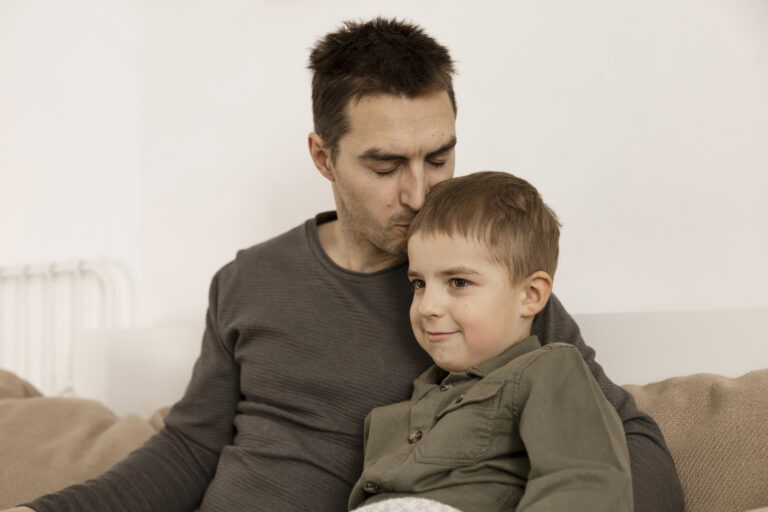Navigating the realm of early childhood behavior can be akin to steering a ship through ever-changing seas.
In my experience of taking part in this journey, the concept of positive reinforcement has emerged not just as a strategy, but as a philosophy—a bedrock upon which the foundations of mutual respect and understanding are built.
Let me walk you through the insights and practices that have illuminated my path, offering a beacon for those who seek to shape behavior without resorting to timeouts.
The Essence of Positive Reinforcement
At its heart, positive reinforcement is about acknowledgment and encouragement, a way to guide young learners toward desirable behaviors by focusing on what they’re doing right.
Understanding Positive Reinforcement
From my vantage point, positive reinforcement is the act of encouraging a desired behavior by offering a positive response. This approach has shifted the dynamics in my classroom, turning potential power struggles into opportunities for growth and connection.
The Benefits of This Approach
I’ve seen firsthand the transformative power of positive reinforcement. It builds self-esteem, enhances motivation, and fosters a love of learning, all while strengthening the educator-child bond.
Implementing Positive Reinforcement in the Classroom
The application of positive reinforcement is both an art and a science, requiring creativity, consistency, and a keen understanding of each child’s needs.
Recognizing and Rewarding Positive Behavior
One strategy that’s been particularly effective is the immediate recognition and reward of positive behavior.
Whether it’s verbal praise, a sticker, or an extra few minutes of playtime, acknowledging good behavior in the moment reinforces its value.
Creating a Positive Learning Environment
In my journey, I’ve learned that a positive learning environment is fertile ground for positive reinforcement to take root.
I’ve personally used, and seen the benefits of, crafting a classroom atmosphere where every child feels valued, safe, and eager to participate.
Using Encouragement Over Praise
I’ve tried shifting from generic praise to specific encouragement, focusing on the effort rather than the outcome.
This nuanced approach has been my secret weapon, helping children develop resilience and a growth mindset.
Role-Modeling and Storytelling
In my journey, integrating role-modeling and storytelling has been a profound way to illustrate positive behavior and its benefits.
By sharing stories that highlight cooperation, kindness, or perseverance, and embodying these traits in my interactions, I’ve seen children naturally gravitate towards mimicking these behaviors.
This method doesn’t just tell them what to do; it shows them, providing relatable examples they can understand and emulate.
Goal Setting and Celebrating Achievements
I’ve discovered that setting achievable goals with the children for their behavior or learning tasks creates a roadmap for success.
When a child reaches their goal, celebrating this achievement, big or small, reinforces their effort and motivates them and their peers to strive for their own goals.
This practice has turned our classroom into a thriving community where each child’s achievements are recognized and celebrated, fostering a collective spirit of accomplishment and encouragement.
Positive Note Home
Sending a positive note home has been an incredibly effective strategy. When a child exhibits positive behavior or makes a notable effort, I jot down a quick note to their parents detailing the commendable action.
This not only reinforces the positive behavior but also involves parents in the recognition process, making the child feel extra proud of their achievements.
I’ve found this practice strengthens the home-school connection and reinforces the child’s desire to continue their positive behavior.
Strategies Beyond Traditional Rewards
While stickers and praise have their place, I’ve explored a range of strategies that go beyond traditional rewards, tapping into intrinsic motivations and deeper connections.
Encouraging Self-Assessment
I’ve seen the power of encouraging children to assess their own behavior. Simple questions like, “How do you think you did?” help children reflect on their actions and understand the impact of their choices.
Fostering Peer Recognition
In my work, I’ve found that peer recognition can be incredibly motivating. Creating opportunities for children to acknowledge each other’s positive behaviors fosters a supportive community atmosphere.
Incorporating Playful Learning
I’ve gathered that integrating learning and play is a fantastic way to reinforce positive behavior. When children are engaged and enjoying themselves, they’re more likely to exhibit the behaviors we wish to encourage.
Challenges and Reflections
No journey is without its challenges, and the path of positive reinforcement is no exception. Yet, with each obstacle, there’s an opportunity for reflection and growth.
Navigating Missteps
In my experience, it’s important to view missteps not as failures but as learning opportunities. This perspective has allowed me to maintain a positive outlook and stay committed to the principles of positive reinforcement.
The Importance of Patience and Consistency
I’ve found that patience and consistency are key. The effects of positive reinforcement may not be immediate, but with time, they can lead to significant and lasting changes in behavior.
Final Thoughts
In my years of working with children, embracing positive reinforcement as a cornerstone of behavioral guidance has been a journey filled with discovery, challenge, and immense reward.
It’s taught me that shaping behavior is less about controlling and more about guiding, less about demanding and more about inspiring.
Positive reinforcement, when applied with understanding, creativity, and patience, offers a path to developing self-disciplined, confident, and joyful learners.
It’s a testament to the power of focusing on the positive, of nurturing the best in each child, and of believing in the transformative potential of encouragement and love.












